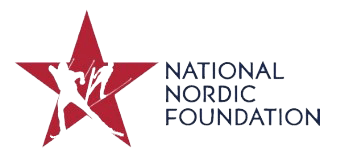With the conclusion of last season and now starting into the meat of this new training year, I am assessing last season – what went well, what I want to do differently, and what I should avoid and target this summer. This is something that I’ve done at the end of each season for the past ten years or so. Now, looking back on the different phases of my development, I can see a few key things I’ve learned and what I hope to hone in on going into this upcoming Olympic season.

Last year was a roller coaster of emotions, performance gains, set-backs, illness, and learning opportunities. As I look back at the challenges and accomplishments of last season, I am grateful for the previous lessons learned throughout the past ten years of ski racing. Getting Covid-19 ten days before I was slated to depart for the World Cup opener in Ruka, Finland, and hustling to qualify for World Championships was undoubtedly the largest challenge I faced in my career thus far. Without the guidance of my coach, Erik Flora, and the previous ten years of experiences pursuing ski racing at the highest level I am not sure I would have been able to bounce back from illness and roughly two months of interrupted training November through January.
In light of last season, here are some major take-aways and lessons I realized I have learned over the past ten years as a full-time ski racer.
- Training and fitness gains are earned through consistently pumping out quality training weeks. I used to believe my gains came from that one single, brutally tough interval session or training day. I know those days are completely necessary, but I’ve also come to realize that real gains are made when I string three to five weeks together full of those high-quality days… month after month and year after year.
- Recently, I’ve come to better understand the purpose of each workout. Coaches have always told me to, “have an objective or goals for each session”. I struggled to buy into that thought pattern when I was 20 because every workout just made me fitter and stronger – after all, wasn’t that the goal? In recent years, particularly while racing on the World Cup, I learned that while I’m fit even amongst top World Cup skiers, I am lacking some of the specific power, mechanical efficiency, and durability that top 10 skiers have. From this knowledge, I now understand that every roller ski session serves as my opportunity to increase power and efficiency. Bounding intervals help build power and increase my engine, while plyos help me create the ability to respond to accelerations under fatigue. Now, every workout I do is linked to an end goal; whether that is the finishing stretch of a 50k, high-speed double poling in a pack, or the A climb that is a brutal part of each World Cup course- every part of every workout I do has a purpose.
- If quality training occurs 45-50 weeks a year when I am healthy, then I can afford to take time off if I do become injured or sick. It is easier to accept taking proper rest time for fatigue, illness, or injury when you know that you’ve utilized the previous weeks and months prior. At this point and when I had COVID in November, I could rest easy (well, easier… it’s never “easy” to take time off) knowing that I had put in quality training April through November. With that type of base under my belt, I knew I could handle this blip in my season.
The third point listed above is by far the most valuable trait I’ve learned to adopt, and I believe it is what has made it possible for me to pursue my goals. Consistent training and quality workouts are not possible if you are not allowing yourself to recover fully from illness or injury. As a younger athlete my focus was always very short-sighted – missing a single interval session for a cold was devastating. Hurdles like catching COVID last November will always be a mental struggle for me, but when I keep a far-sighted approach to pursuing my goals, I now know that I can rebound. I sat out several weeks in November and followed up that recovery with another month consisting only of low intensity distance training. As tough as it was at the time, I knew that a conservative recovery and holding back on intervals and racing for several weeks longer than I maybe even needed to was necessary. I knew that this would ultimately ensure that I was healthy enough down the road to still give the second half of the ski season a shot. I am sure all my coaches have tried to engrain this habit and athletic maturity, but it is a skill that is hard to come by without trial and error. My hope is for young athletes to read this and avoid a few extra trials of their own – helping them to dodge some of the errors I have made as they chase their goals.





Well stated and great advice David! Shared this with our Chippewa Valley Nordic Ski Team (CVN – Eau Claire WI). Thank you!
Great advice!
Experience matters, distance skiing well week-in-week-out requires great durability, both mental and physical. Experience also utilizes mistakes as tools to work from.
Thanks David!